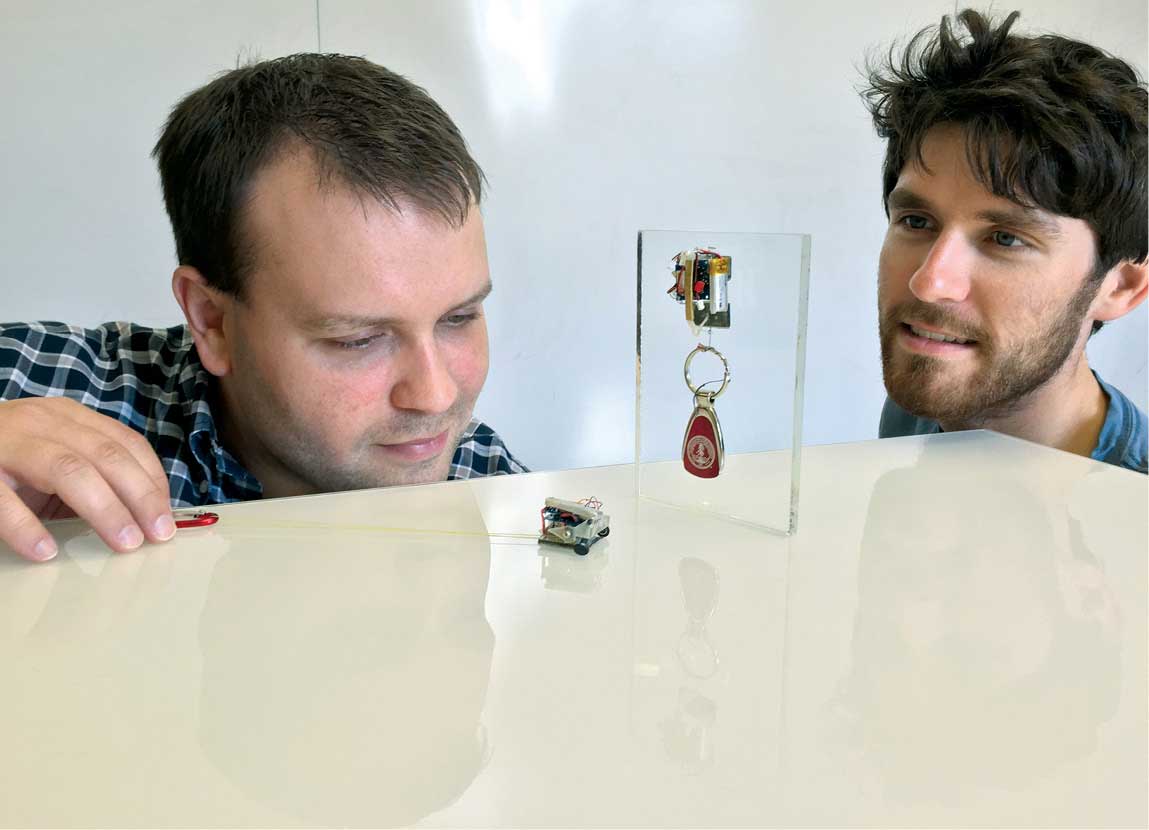New LED tech boosts Wi-Fi bandwidth
A new technology has been developed that can increase the bandwidth of Wi-Fi systems by ten times, using LED lights to transmit information. This technology can be integrated with existing Wi-Fi systems to reduce bandwidth problems in crowded locations such as airports, where there are multiple users in play.
Recent advances in LED technology have made it possible to modulate LED light more rapidly, opening up the possibility of using light for wireless transmission in a free-space optical communication system.
Thinh Nguyen, associate professor at Oregon State University of electrical and computer engineering, has worked with Alan Wang, an assistant professor of electrical and computer engineering, to build the first prototype.
The prototype, called WiFO, uses LEDs that are beyond the visual spectrum for humans and creates an invisible cone of light about 1sqm, in which data can be received.
To address the issue of a small area of usability, researchers have created a hybrid system that can switch between multiple LED transmitters installed on a ceiling and the existing Wi-Fi system.
ISS to test laser cannon to vaporise hazardous space junk
The International Space Station (ISS) is continually pelted by small pieces of space junk, and it often needs to shift its orbit to avoid collisions.
Japanese researchers have come up with a laser system that could vaporise bits of space debris before these makes contact with the floating laboratory.
There is a huge amount of space debris orbiting Earth, which is made up of bits of old satellites, rockets and other man-made items that have been left behind. And even a tiny screw can cause damage to ISS because of the speed at which these items are travelling.
The team at Japan’s Riken Computational Astrophysics Laboratory will be installing an Extreme Universe Space Observatory in its ISS module in 2017. The equipment is designed to monitor the atmosphere for ultraviolet (UV) emissions from cosmic rays but could also double as a precision space-junk-tracking system.
Also, this can be added a laser that can focus an intense beam of energy onto a piece of space junk. This would vaporise at least part of the item, creating a burst of plasma that could push the projectile off course, ideally towards the Earth’s atmosphere, where it would burn up.
Tiny robots that can carry up to 2000 times their weight

Miniature robots, called MicroTugs, have power equivalent to a human being dragging a blue whale, and can be used in factories or on building sites.
Scientists behind MicroTugs found inspiration in nature, borrowing techniques used by geckos and ants, which are some of nature’s most adept climbers, in their design.
The team at Stanford, including PhD students David Christensen and Elliot Hawkes, demonstrated a 9gm robot that can carry more than 1kg vertically up glass, which is equivalent to a human being climbing a skyscraper while carrying an elephant.
Another robot, which weighs just 20mg and can carry 500mg, is so tiny it had to be built under a microscope, using tweezers to put the parts together.
A car safety system that spots driver errors
Indian-American researchers have developed a new car-safety system that anticipates what the driver is about to do a few seconds before it happens, to prevent those behind the wheel from committing mistakes.
By observing the driver’s body language and considering that in the context of what is happening on the road, a computer algorithm can determine the probability that the driver will turn or change lanes.
Based on street maps and GPS information, the system could also give an Illegal Turn message if the driver is about to turn the wrong way on a one-way street.
To develop the system, Ashutosh Saxena, assistant professor of computer science at Cornell University, and colleagues recorded videos of ten drivers, along with videos of the road ahead, for 1899km of expressway and city-driving over a period of two months.
A computer using face-detection and tracking-software identified head movements and learnt to associate these with turns and lane changes, so that the final system can anticipate possible actions the driver may take.
Acoustruments use sound waves to control smartphones
Researchers have developed an inexpensive alternative to smartphone touchscreens—a toolbox of physical knobs, sliders and other mechanisms that can be readily added to control any device.
Researchers at Carnegie Mellon University and Disney Research drew inspiration from wind instruments in devising these mechanisms, which they call acoustruments.
Their idea is to use pluggable plastic tubes and other structures to connect a smartphone’s speaker with its microphone. The device can then be controlled by acoustically altering sounds as these pass through this system. Just as a simple slide whistle or flute can produce expressive music, these acoustruments can add a wide range of functionality to a smartphone including proximity and pressure sensors.






